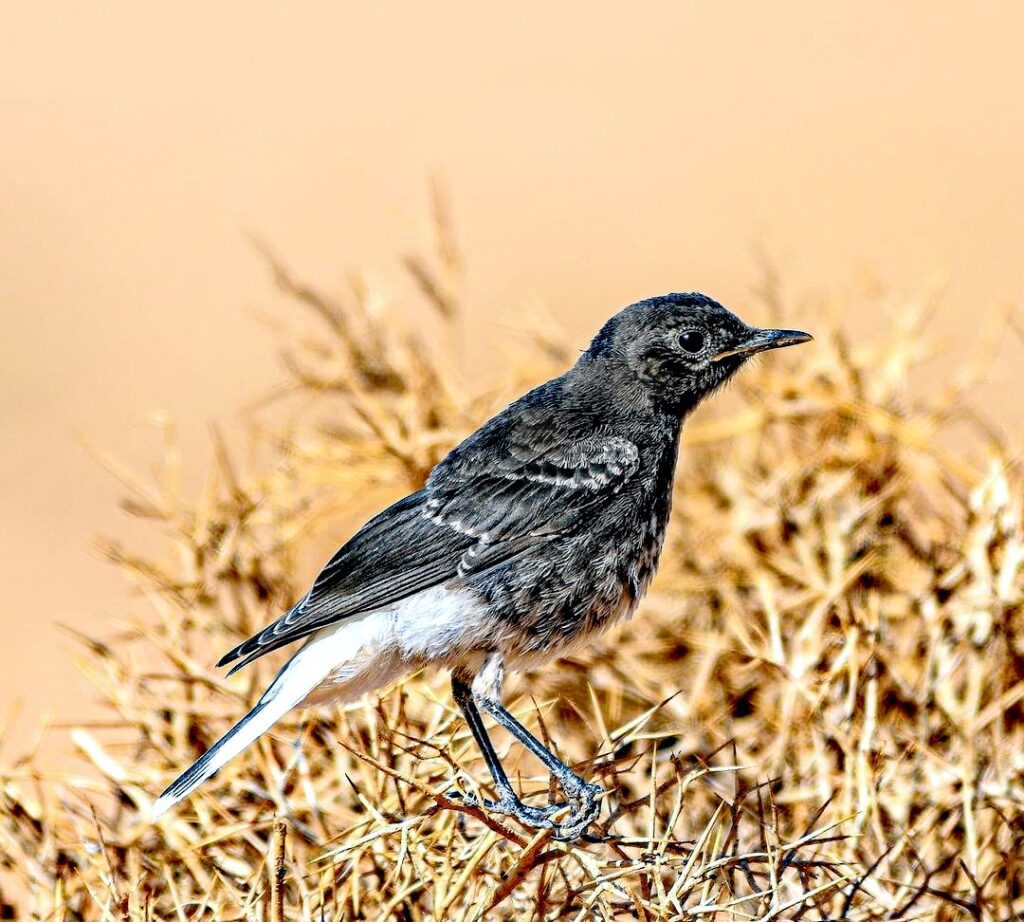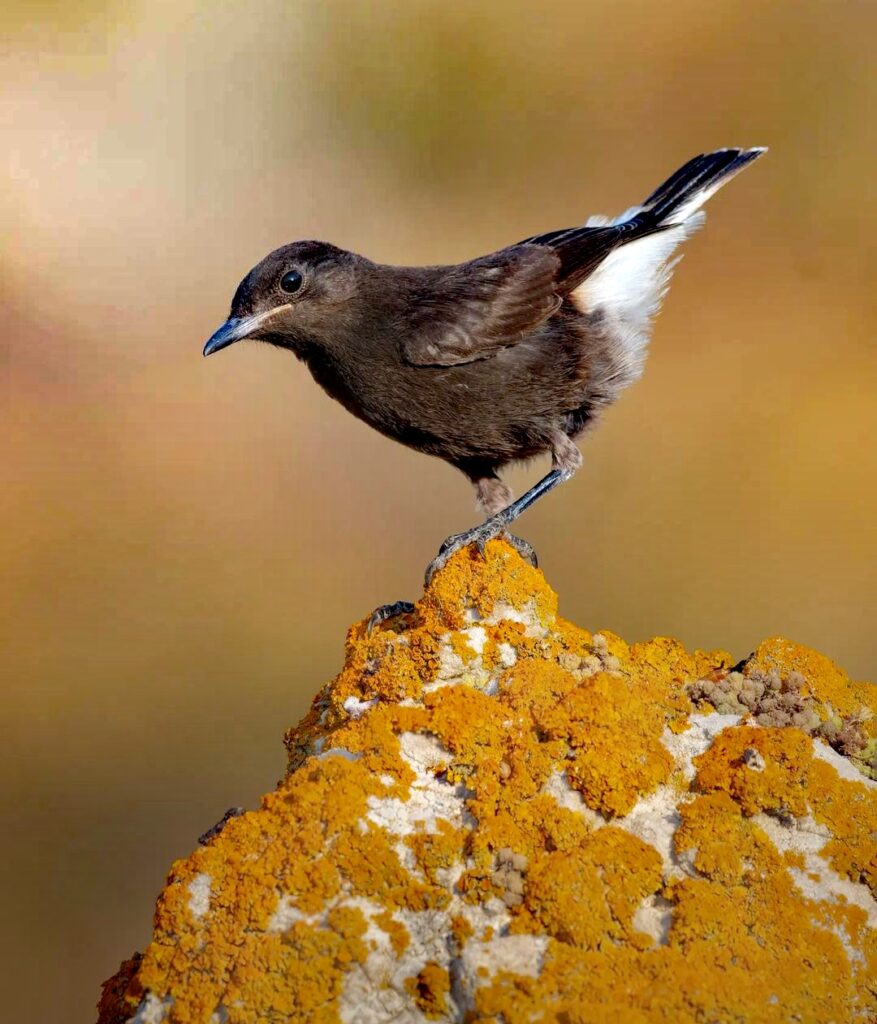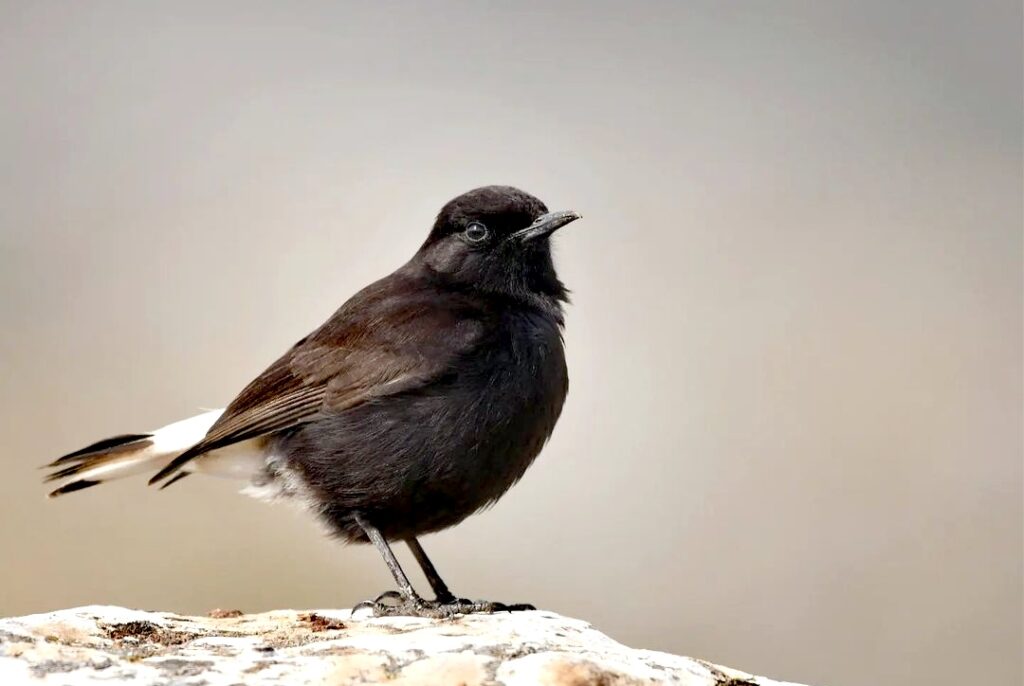BLACK WHEATEAR
Spotting a Black Wheatear perched on a rocky ledge or darting across the desert slopes is a rewarding sight for birdwatchers exploring the rugged landscapes of Morocco.


Appearance: The Black Wheatear is a medium-sized wheatear with a predominantly black plumage, which gives it its distinctive appearance. It has a white rump and tail base, which contrasts sharply with the rest of its body. The male and female have similar plumage, although males may have darker black plumage and more extensive white markings on the wings and tail.
Habitat: In Morocco, the Black Wheatear inhabits arid and semi-arid habitats, including rocky slopes, cliffs, gorges, and dry riverbeds. It prefers areas with rocky outcrops and sparse vegetation, where it can find suitable nesting sites and forage for food.
Diet: Black Wheatears are primarily insectivorous, feeding on a variety of insects and other invertebrates found in their habitat. They forage on the ground, using their sharp bills to probe and pick at the soil in search of prey. They may also catch flying insects in mid-air or glean them from vegetation.
Behavior: Black Wheatears are often seen perched on rocks or low shrubs, where they can survey their surroundings for prey or potential threats. They are agile and active birds, hopping and flitting about as they forage for food. They may also engage in short flights, especially during the breeding season when males perform aerial displays to attract mates.
Breeding: Breeding typically occurs during the spring and summer months, with pairs establishing territories and building nests in rocky crevices, cliff ledges, or among vegetation. The female lays a clutch of eggs, usually numbering between three to six, and both parents share the responsibility of incubating the eggs and caring for the young.
Conservation: The Black Wheatear is not considered globally threatened, but like many bird species, it may face threats such as habitat loss and degradation due to human activities, including agriculture, urbanization, and infrastructure development. Conservation efforts focused on habitat protection, sustainable land management, and monitoring populations are essential for ensuring the continued presence of this charismatic bird in Morocco and beyond.
